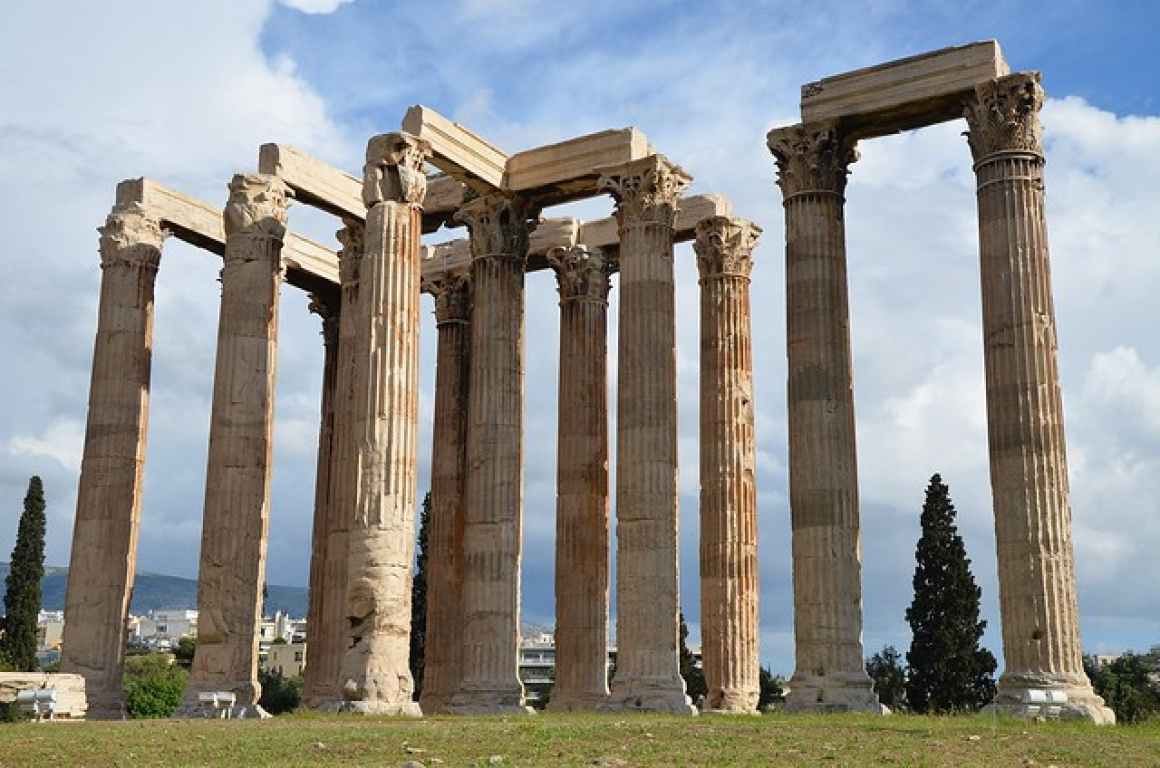At the heart of Athens, the Temple of Olympian Zeus stands as a striking symbol of grandeur and ambition. Growing up here, I would walk past those towering Corinthian columns, always amazed by how they seemed to defy the passage of time. While many travellers focus on the Acropolis and Parthenon or the Ancient Agora, the Temple of Olympian Zeus in Athens offers a unique perspective on the city’s layered history. Dedicated to Zeus, the king of the gods, this massive structure showcases the remarkable ambition of ancient rulers and their dedication to the divine.

 'Temple of Olympian Zeus, Athens' - Attribution: Following Hadrian
'Temple of Olympian Zeus, Athens' - Attribution: Following HadrianA History of Ambition and Delay
The construction of the Temple of Olympian Zeus Athens began in the 6th century BC under the rule of Peisistratos but was only completed more than 600 years later by the Roman Emperor Hadrian. This lengthy timeline explains the mixture of architectural styles evident in the remaining columns. Although only a few of the original columns survive, they hint at the temple’s immense scale, which made it the largest temple in Greece during its prime.\rWhile the Acropolis often takes centre stage, the Temple of Zeus Athens is just as compelling. Standing in its shadow, you’ll feel an overwhelming sense of humility as you take in the sheer scale of the structure and consider its long and storied past.
When to Visit and What to See
For the best experience, visit the temple in the early morning. The soft light beautifully highlights the white marble columns, and the site is far less crowded at this time, allowing you to fully immerse yourself in its tranquil atmosphere. Be sure to examine the fallen column from a 19th-century storm—it lies on the ground and offers a fascinating glimpse into how these massive blocks were intricately assembled by ancient engineers.\rAthens summers can be hot, so bring a hat and plenty of water to make your visit more comfortable. Allow yourself time to wander slowly around the ruins and appreciate the subtle details that often go unnoticed during rushed tours.
Local Legends and Mythical Connections
Locals have long passed down a charming legend about the Temple of Zeus in Athens. It’s said that on moonlit nights, Zeus himself walks among the columns, ensuring his temple is still revered. While it’s just a tale, it reflects the city’s enduring connection to its mythological past. Even today, Athenians jokingly attribute sudden thunderclaps on clear days to the god’s presence.
Nearby Attractions and Practical Tips
The temple’s central location makes it easy to explore nearby highlights, including Syntagma Square and the National Garden. Combining your visit with these landmarks allows for a well-rounded exploration of Athens. And if you’re wondering how walkable Athens is, rest assured that the city’s compact layout makes getting around on foot straightforward. Just be prepared with comfortable shoes and sunscreen, especially in the summer.
\rAfter exploring the Temple of Olympian Zeus, you’ll find several charming cafes nearby, perfect for a relaxing break before continuing your journey through Athens. The site’s proximity to other major attractions ensures you’re perfectly positioned to delve deeper into the city’s rich tapestry.
A Testament to Ancient Ambition
The Temple of Olympian Zeus stands as a reminder of the city’s extraordinary ambition, artistry, and devotion to the divine. Even in its partially ruined state, it whispers stories of emperors and gods, fleeting thunderstorms, and timeless legacies. As you stand beneath its towering columns, you’ll understand why it remains such a cherished part of Athens for locals and visitors alike. Whether you’re on a brief city break or a longer exploration, this temple is a must-visit, offering an unforgettable glimpse into the soul of ancient Greece.

